The Generation Mechanism of the Flow-Induced Noise from a Sail Hull on the Scaled Submarine Model
Abstract
:Featured Application
Abstract
1. Introduction
2. Theory of Numerical Simulation
2.1. LES Method
2.2. Theory of Vibration and Sound Radiation by the Flow-Induced Force
3. Description of the Model and the Accuracy Validation
3.1. Research Model
3.2. Parameters of Numerical Calculation
3.3. Accuracy Validation of Numerical Calculation
4. Results of the Flow Field of the Model
4.1. Reference Planes in the Flow Field
4.2. Whole Description of the Flow Field
4.3. Flow Field of the Horseshoe Vortex
4.4. Flow Field of the Boundary Layer Separation
4.5. Flow Field of the Tail Vortex Shedding
5. Results of the Sound Field of the Model
5.1. Distribution of the Fluctuation Pressure on the Surface of the Model
5.2. Analysis of Sound Radiation in the Near Field
5.3. Analysis of Sound Radiation in the Far-Field
5.4. Contour of Sound Pressure of the Model
5.5. Directivity of Sound Radiation
5.6. Comparison of Sound Radiation from the Two Kinds of the Sail Hulls
6. Experimental Validation of the Model
6.1. Theory of Reverberation Method
6.2. Description of the Experimental Measurement
6.3. Results of the Experimental Measurement
7. Conclusions
Author Contributions
Funding
Acknowledgments
Conflicts of Interest
References
- Kwon, H.W.; Hong, S.Y.; Song, J.H. Energy flow models for underwater radiation noise prediction in medium-to-high-frequency ranges. J. Eng. Marit. Environ. 2015, 230, 404–416. [Google Scholar] [CrossRef]
- Caresta, M.; Kessissoglou, N.J. Acoustic signature of a submarine hull under harmonic excitation. Appl. Acoust. 2010, 71, 17–31. [Google Scholar] [CrossRef]
- Mousavi, B.; Rahrovi, A.A.; Kheradmand, S. Numerical simulation of tonal and broadband hydrodynamic noises of non-cavitating underwater propeller. Pol. Marit. Res. 2014, 21, 46–53. [Google Scholar] [CrossRef]
- Zhihua, L.; Ying, X.; Chengxu, T. Method to control unsteady force of submarine propeller based on the control of horseshoe vortex. J. Ship Res. 2012, 56, 12–22. [Google Scholar] [CrossRef]
- Huo, L.; Fei, S.M. Design on the fairwater shape and its influence on the radiation noise of submarines. J. Vibroeng. 2016, 18, 1392–8716. [Google Scholar] [CrossRef]
- Liu, Z.H.; Xiong, Y.; Tu, C.X. The method to control the submarine horseshoe vortex by breaking the vortex core. J. Hydrodyn. 2014, 26, 637–645. [Google Scholar] [CrossRef]
- Porteous, R.; Moreau, D.J.; Doolan, C.J. A review of flow-induced noise from finite wall-mounted cylinders. J. Fluids Struct. 2014, 51, 240–254. [Google Scholar] [CrossRef]
- da Rocha, J.; Suleman, A.; Lau, F. Flow-induced noise and vibration in aircraft cylindrical cabins: Closed-form analytical model validation. J. Vib. Acoust. 2011, 133, 051013. [Google Scholar] [CrossRef]
- Kudashev, E.B.; Kolyshnitsyn, V.A.; Marshov, V.P.; Tkachenko, V.M.; Tsvetkov, A.M. Experimental simulation of hydrodynamic flow noises in an autonomous marine laboratory. Acoust. Phys. 2013, 59, 187–196. [Google Scholar] [CrossRef]
- Abshagen, J.; Schäfer, I.; Will, C.; Pfister, G. Coherent flow noise beneath a flat plate in a water tunnel experiment. J. Sound Vib. 2015, 340, 211–220. [Google Scholar] [CrossRef]
- Kang, H.; Tsutahara, M. An application of the finite difference-based lattice Boltzmann model to simulating flow-induced noise. Int. J. Numer. Methods Fluids 2006, 53, 629–650. [Google Scholar] [CrossRef]
- Zhang, N.; Xie, H.; Wang, X.; Wu, B.S. Computation of vertical flow and flow induced noise by large eddy simulation with FW-H acoustic analogy and Powell vortex sound theory. J. Hydrodyn. 2016, 28, 255–266. [Google Scholar] [CrossRef]
- Liu, K.; Zhou, S.; Li, X.; Shu, X.; Guo, L.; Li, J.; Zhang, X. Flow-induced noise simulation using detached eddy simulation and the finite element acoustic analogy method. Adv. Mech. Eng. 2016, 8, 1–8. [Google Scholar] [CrossRef]
- Qu, D.; Zhang, Z.; Lou, J. Analysis of hydrodynamic noise characteristics of rudder-wing. J. Vibroeng. 2017, 11, 2345–2533. [Google Scholar] [CrossRef]
- Li, X.-G.; Yang, K.-D.; Ma, Y.-L. Flow-noise calculation using the mutual coupling between vulcanized rubber and the flow around in water. Chin. Phys. Lett. 2012, 29, 064301. [Google Scholar] [CrossRef]
- MÖzden, M.C.; Gürkan, A.Y.; Özden, Y.A.; Canyurt, T.G.; Korkut, E. Underwater radiated noise prediction for a submarine propeller in different flow conditions. Ocean Eng. 2016, 126, 488–500. [Google Scholar] [CrossRef]
- Wei, Y.S.; Wang, Y.S.; Chang, S.P.; Jian, F. Numerical prediction of propeller excited acoustic response of submarine structure based on CFD, FEM and BEM. J. Hydrodyn. 2016, 24, 207–216. [Google Scholar] [CrossRef]
- Doolan, C.J.; Moreau, D.J. Flow-induced noise generated by sub-boundary layer steps. Exp. Therm. Fluid Sci. 2016, 72, 47–58. [Google Scholar] [CrossRef]
- Moreau, D.J.; Prime, Z.; Porteous, R.; Doolan, C.J.; Valeau, V. Flow-induced noise of a wall-mounted finite airfoil at low-to-moderate Reynolds number. J. Sound Vib. 2014, 333, 6924–6941. [Google Scholar] [CrossRef]
- Zhu, W.J.; Shen, W.Z.; Sørensen, J.N. High-order numerical simulations of flow-induced noise. Int. J. Numer. Methods Fluids 2011, 66, 17–37. [Google Scholar] [CrossRef]
- Prek, M. The impact of geometrical parameters on hydrodynamic noise generation. Appl. Acoust. 2000, 60, 343–351. [Google Scholar] [CrossRef]
- von Benda-Beckmann, A.M.; Wensveen, P.J.; Samarra, F.I.; Beerens, S.P.; Miller, P.J. Correction: Separating underwater ambient noise from flow noise recorded on stereo acoustic tags attached to marine mammals. J. Exp. Biol. 2016, 219, 2271–2275. [Google Scholar] [CrossRef] [PubMed]
- Barker, S.J. Measurements of hydrodynamic noise from submerged hydrofoils. J. Acoust. Soc. Am. 1976, 59, 1095–1103. [Google Scholar] [CrossRef]
- Kaltenbacher, M.; Escobar, M.; Becker, S.; Ali, I. Numerical simulation of flow-induced noise using LES/SAS and Lighthill’s acoustic analogy. Int. J. Numei. Meth. Fluids 2010, 63, 1103–1122. [Google Scholar] [CrossRef]
- Germano, M.; Piomelli, U.; Moin, P.; Cabot, W.H. A dynamic subgrid-scale eddy viscosity model. Phys. Fluids 1991, 3, 1760–1765. [Google Scholar] [CrossRef]
- Groves, N.C.; Huang, T.T.; Chang, M.S. Geometric Characteristics of DARPA SUBOFF Models; David Taylor Research Center, Bethesda, USA: Rockville, MD, USA, 1989; pp. 1–51. [Google Scholar]
- Heatwole, C.M.; Franchek, M.A.; Bernhard, R.J. A robust feedback controller implementation for flow induced structural radiation of sound. In Proceedings of the INTER-NOISE and NOISE-CON Congress and Conference, Seattle, WA, USA, 29 September–2 October 1996; Institute of Noise Control Engineering: Reston, VA, USA, 1996. [Google Scholar]
- Zhang, N.; Shen, H.; Zhu, X.; Yao, H.Z.; Xie, H. Numerical simulation on the effect of fairwater optimization to suppress the wall pressure fluctuations and flow induced noise. J. Ship Mech. 2014, 4, 448–458. [Google Scholar] [CrossRef]
- Huang, Q. A Numerical Study of the Flow around Airfoils with Serrated Trailing Edges and the Aerodynamic Noise Based on Large Eddy Simulation. Ph.D. Thesis, Tsinghua University, Beijing, China, 2015. [Google Scholar]



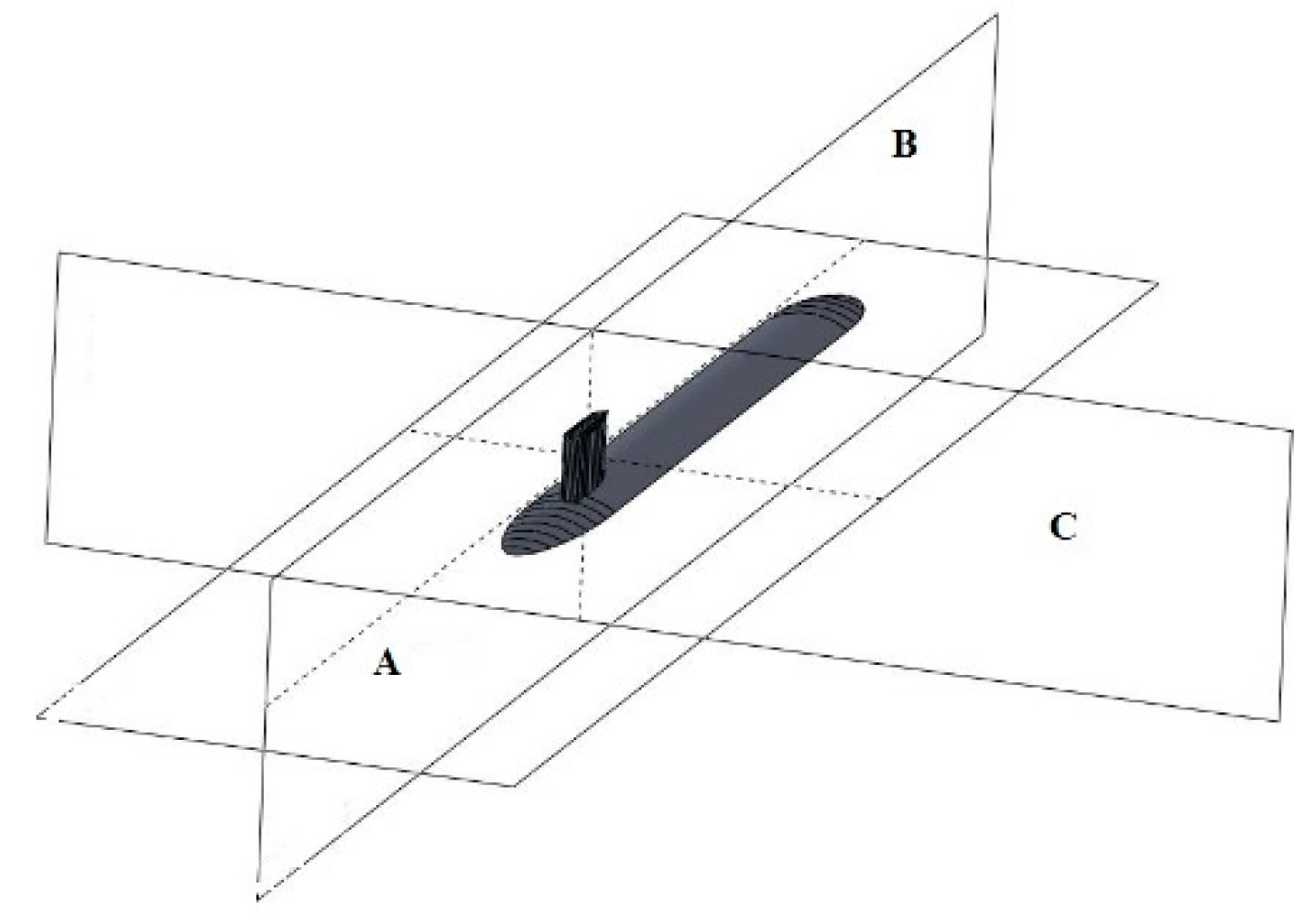

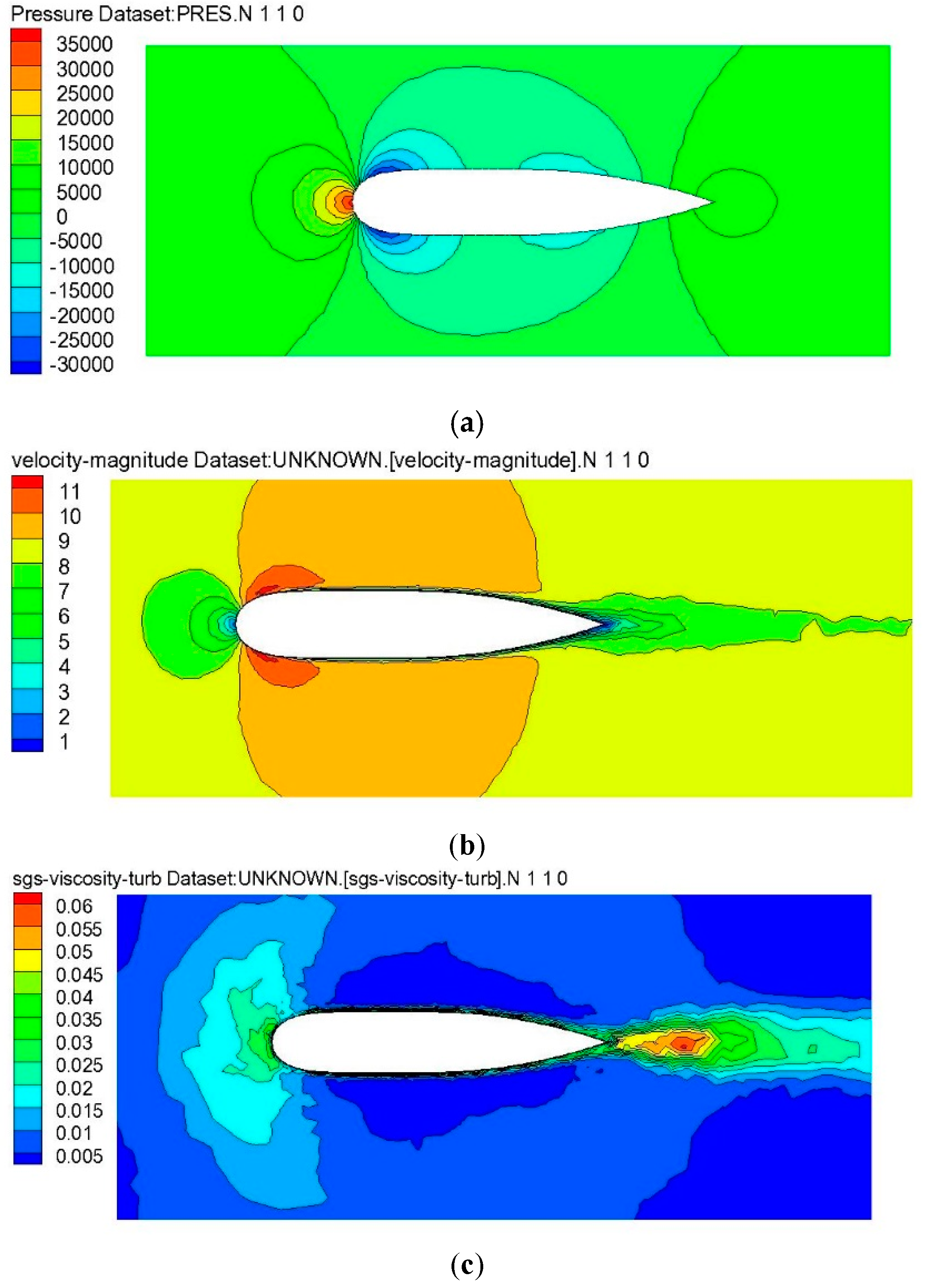

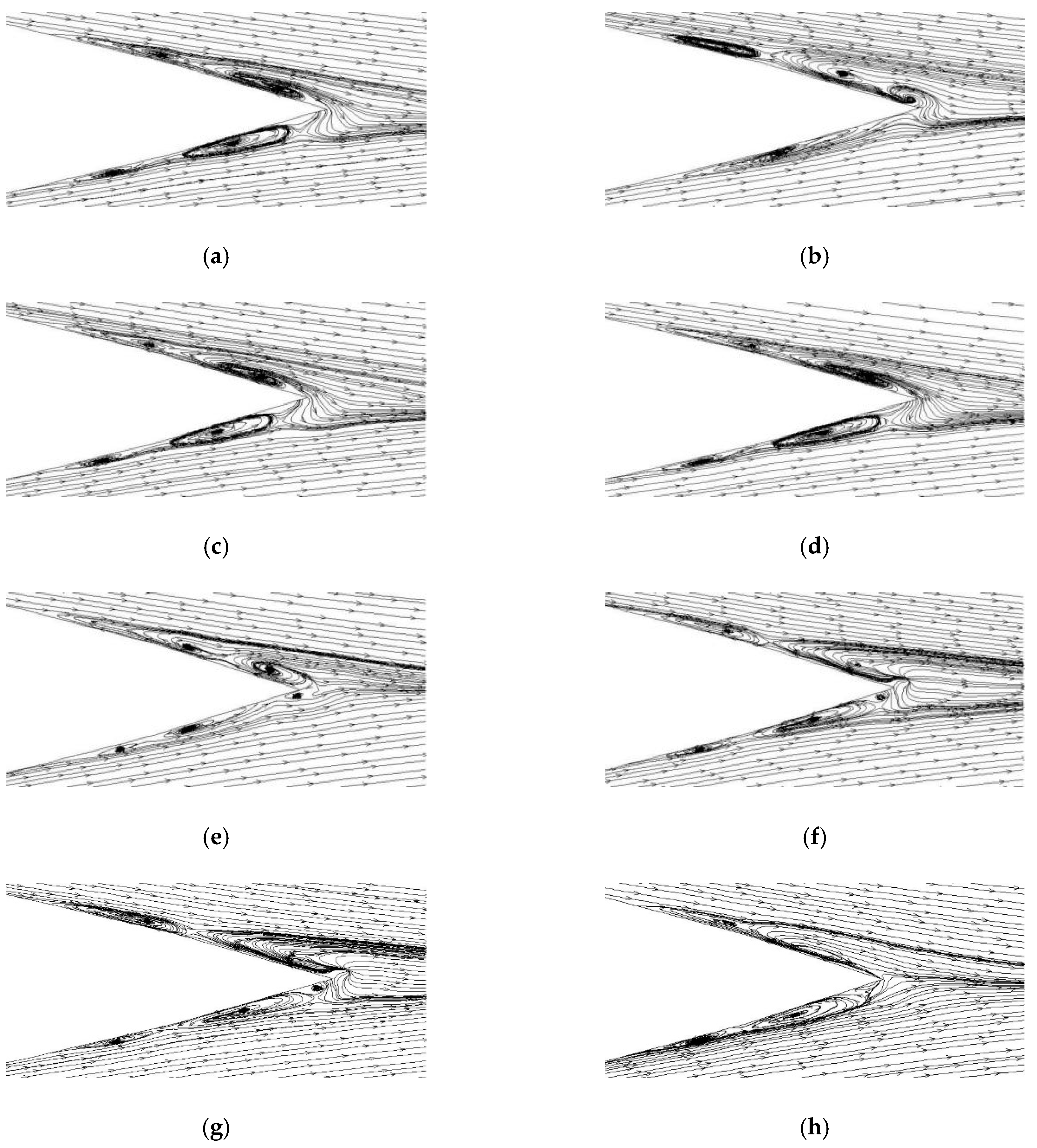
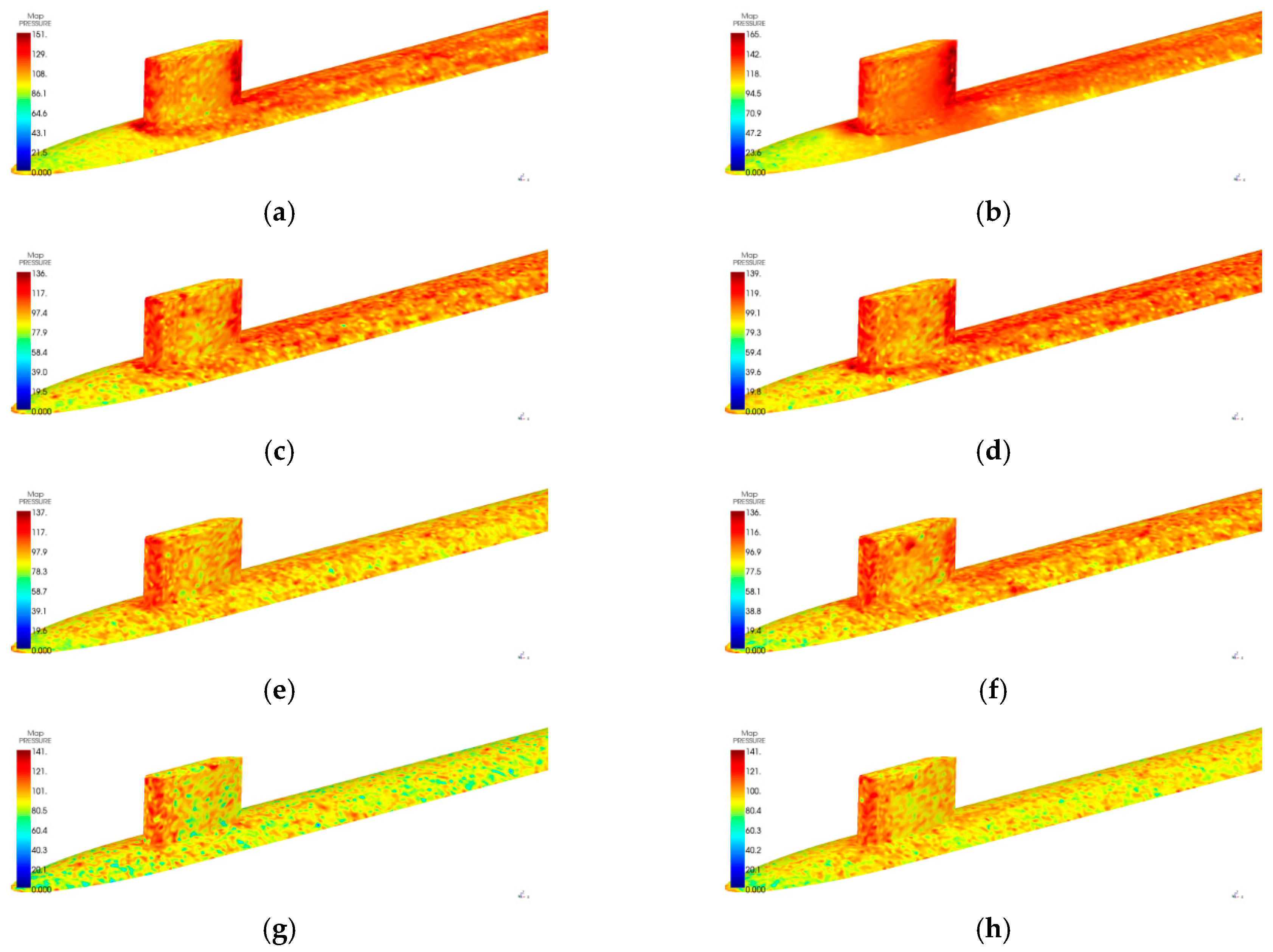
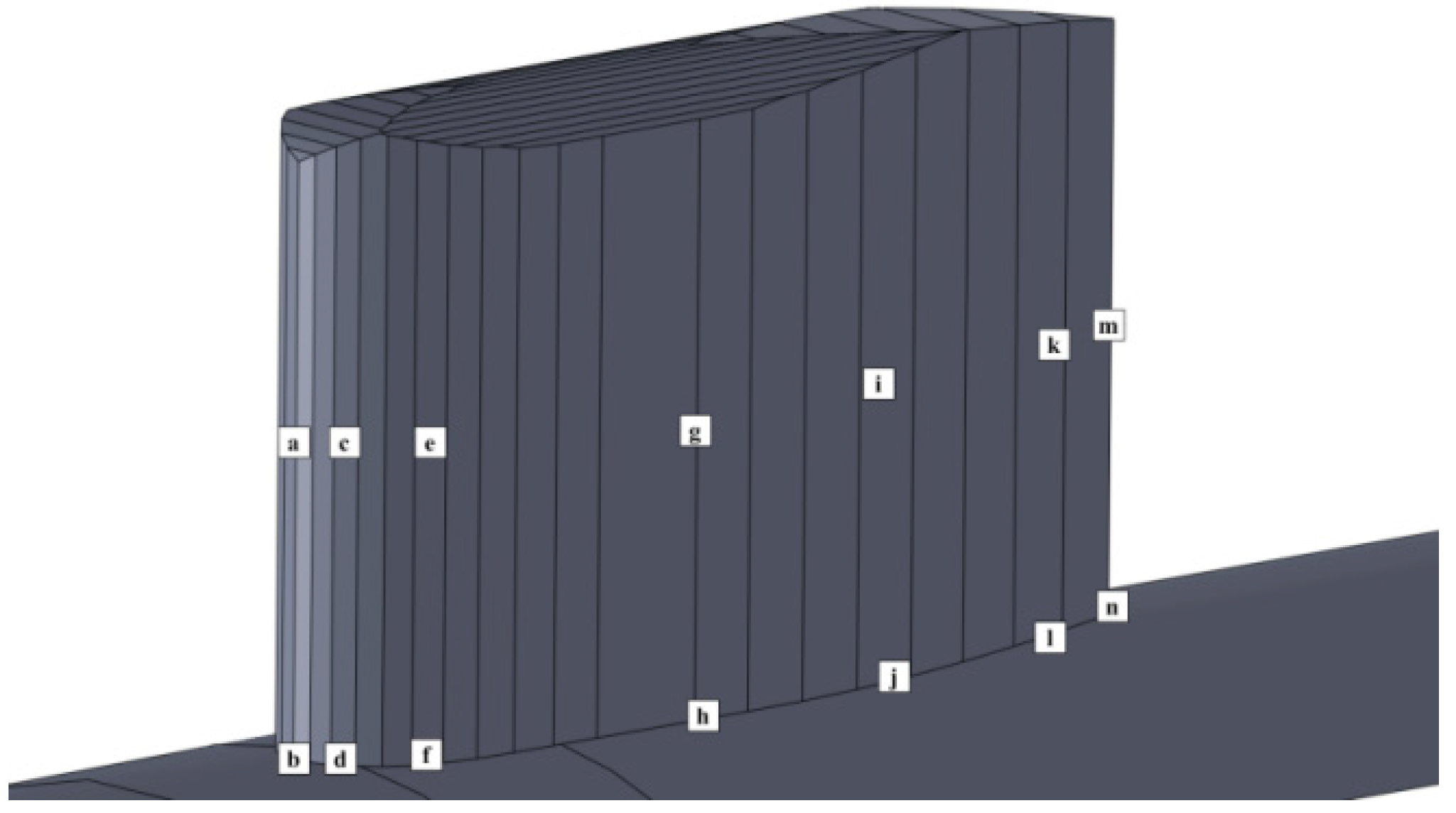
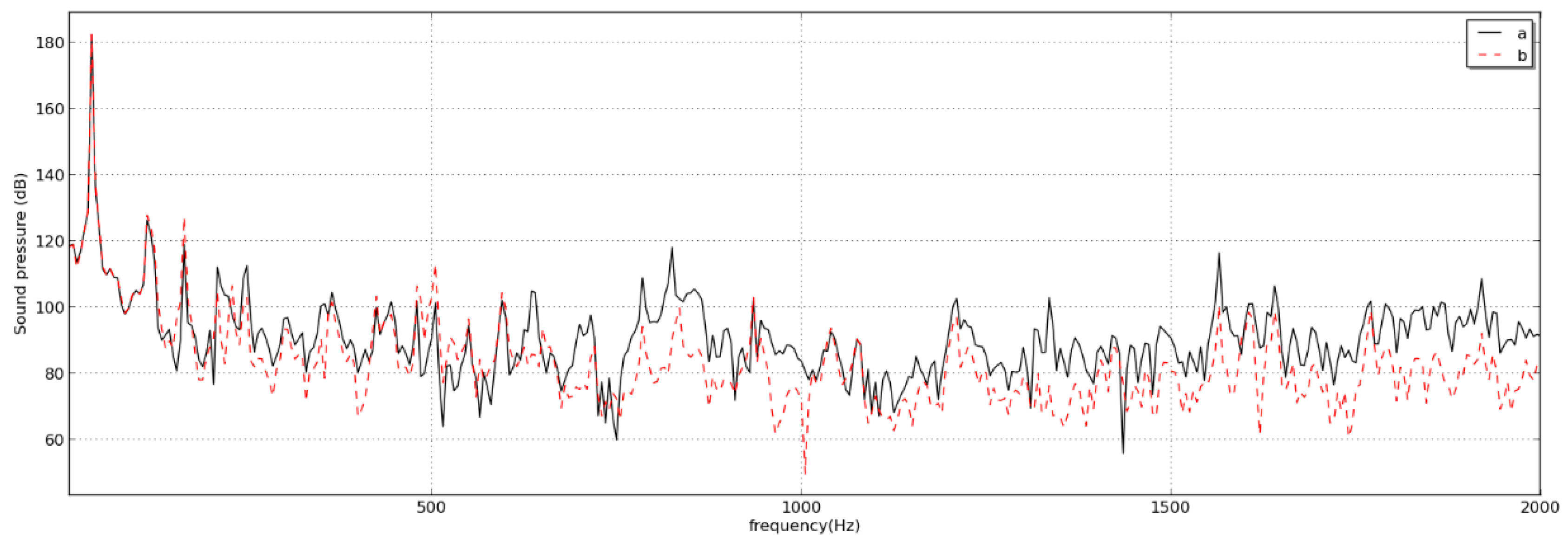

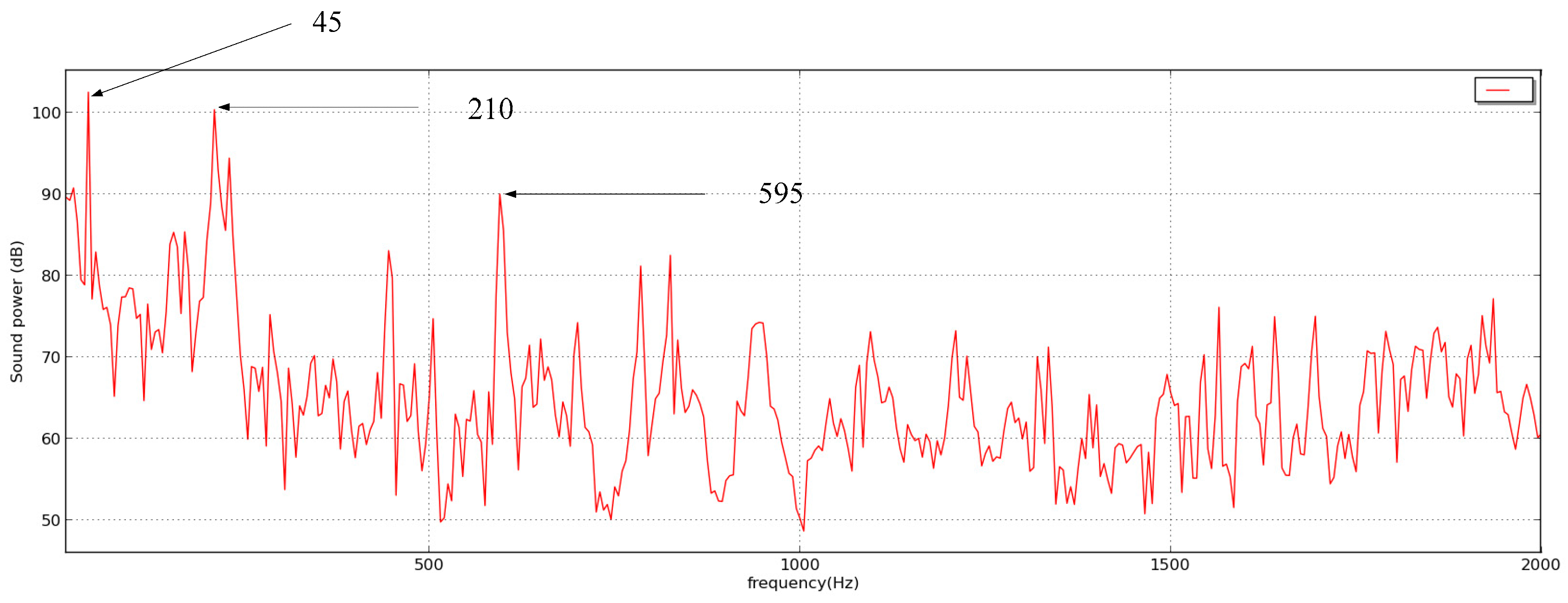

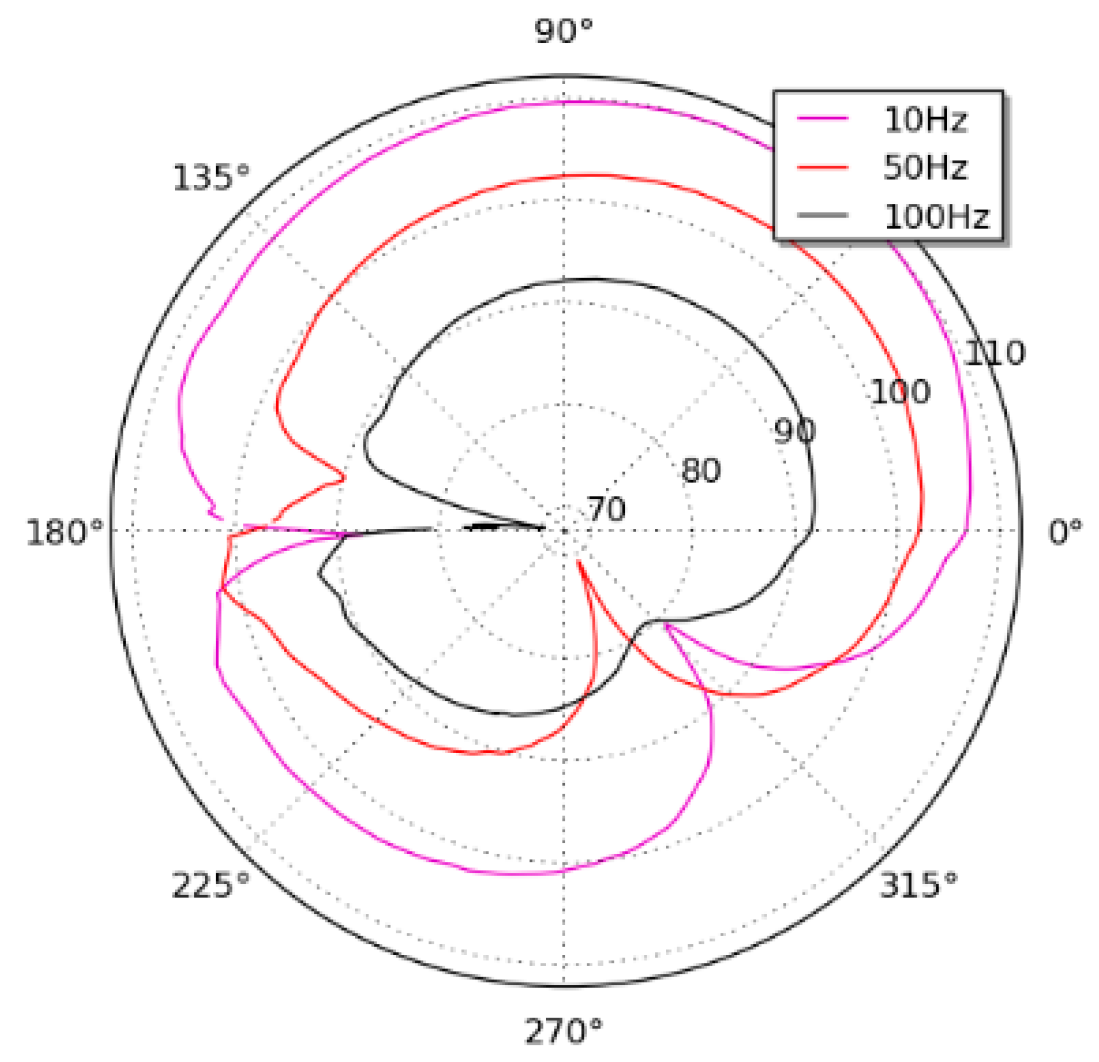
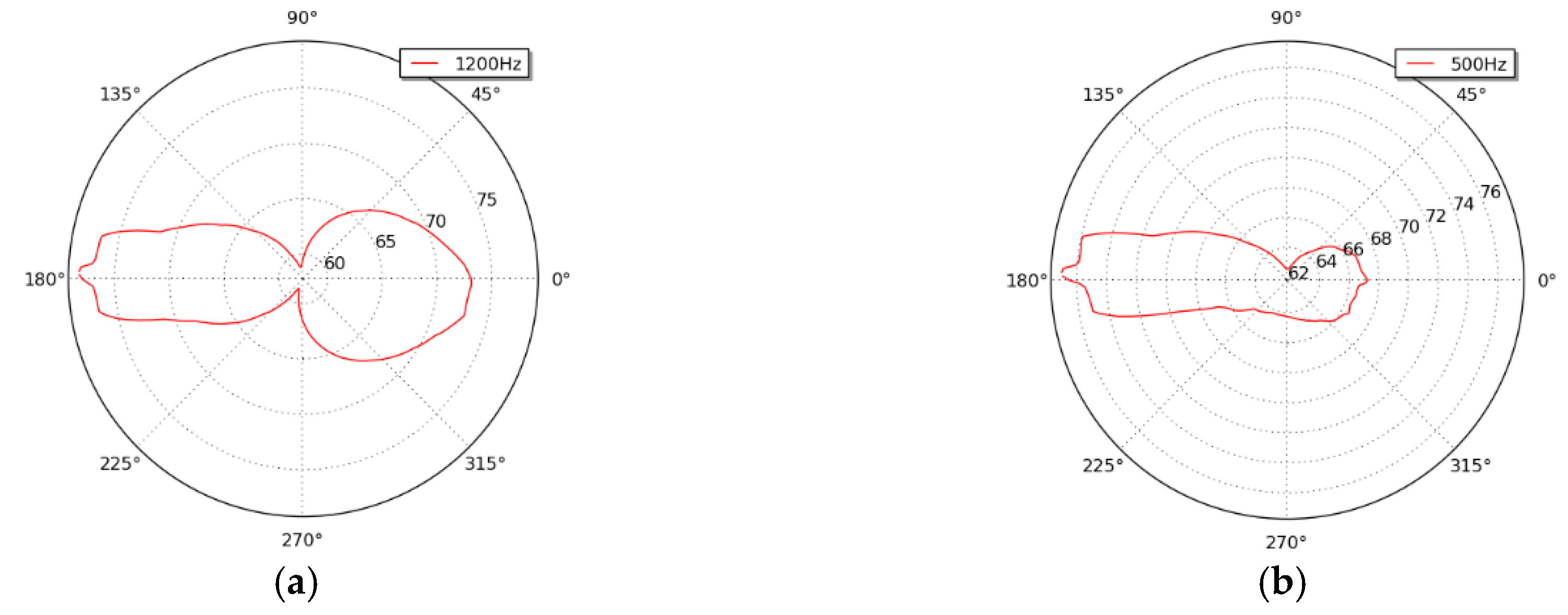
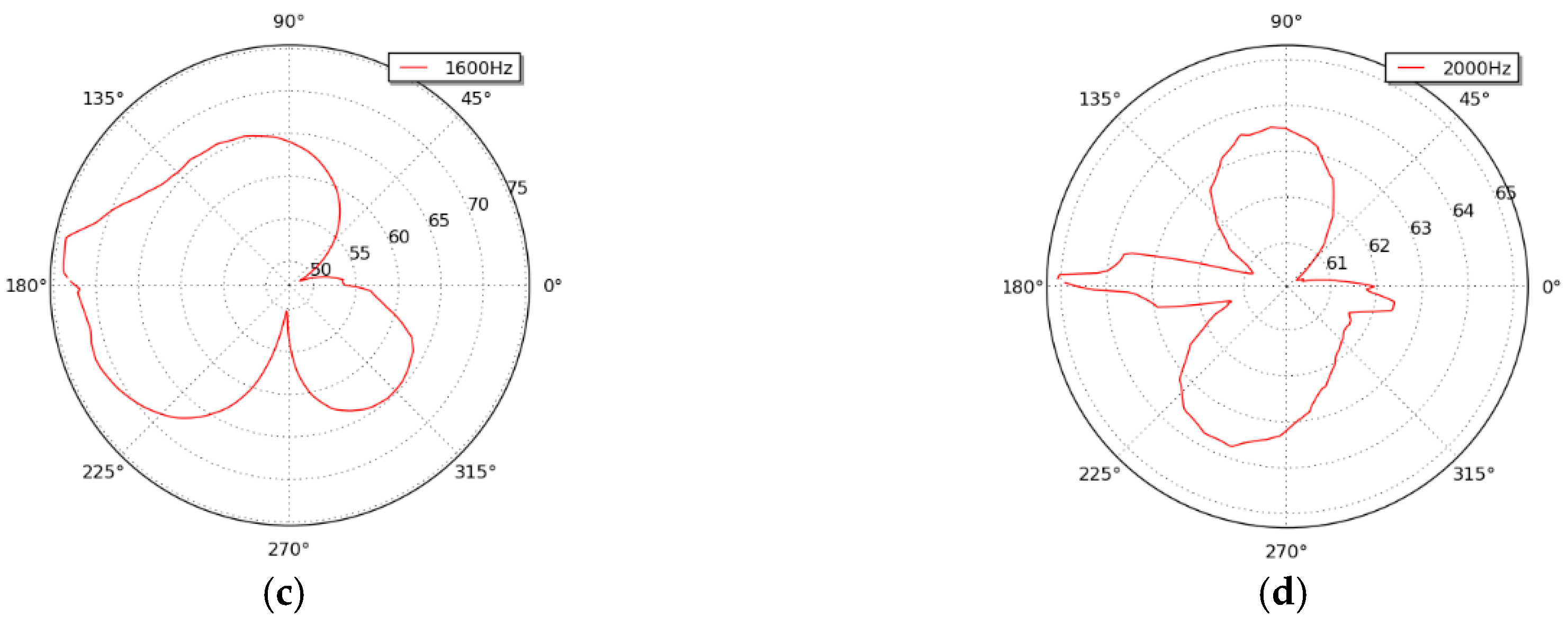
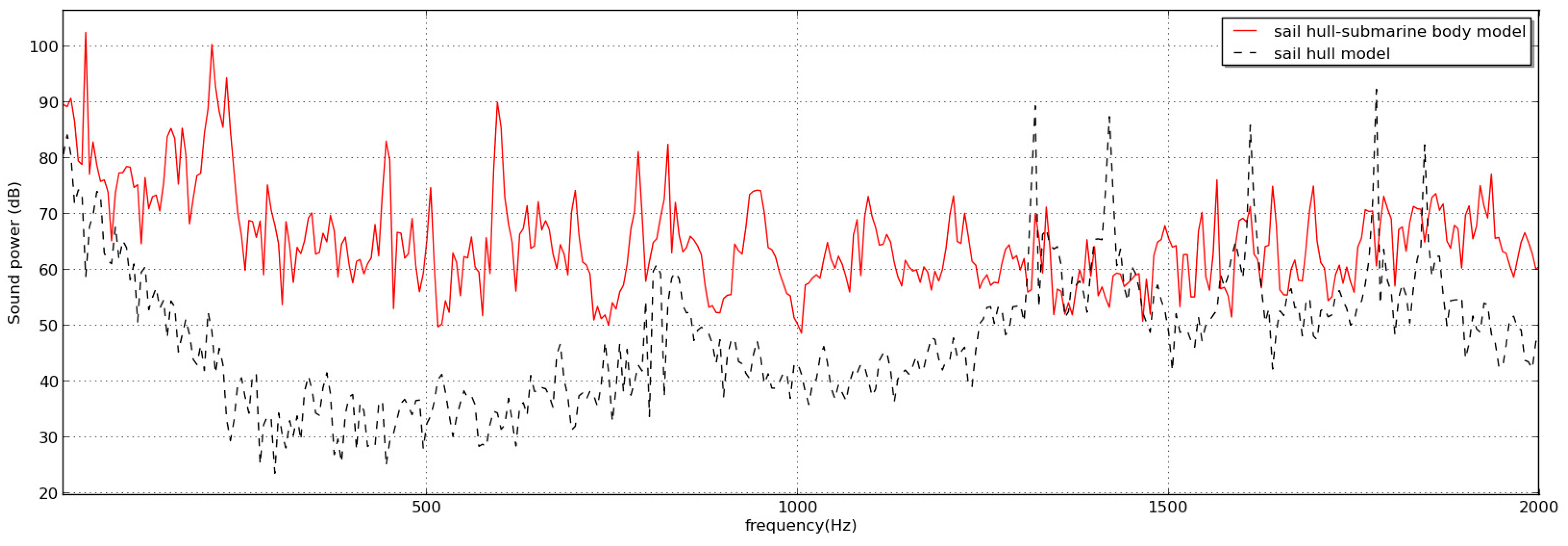
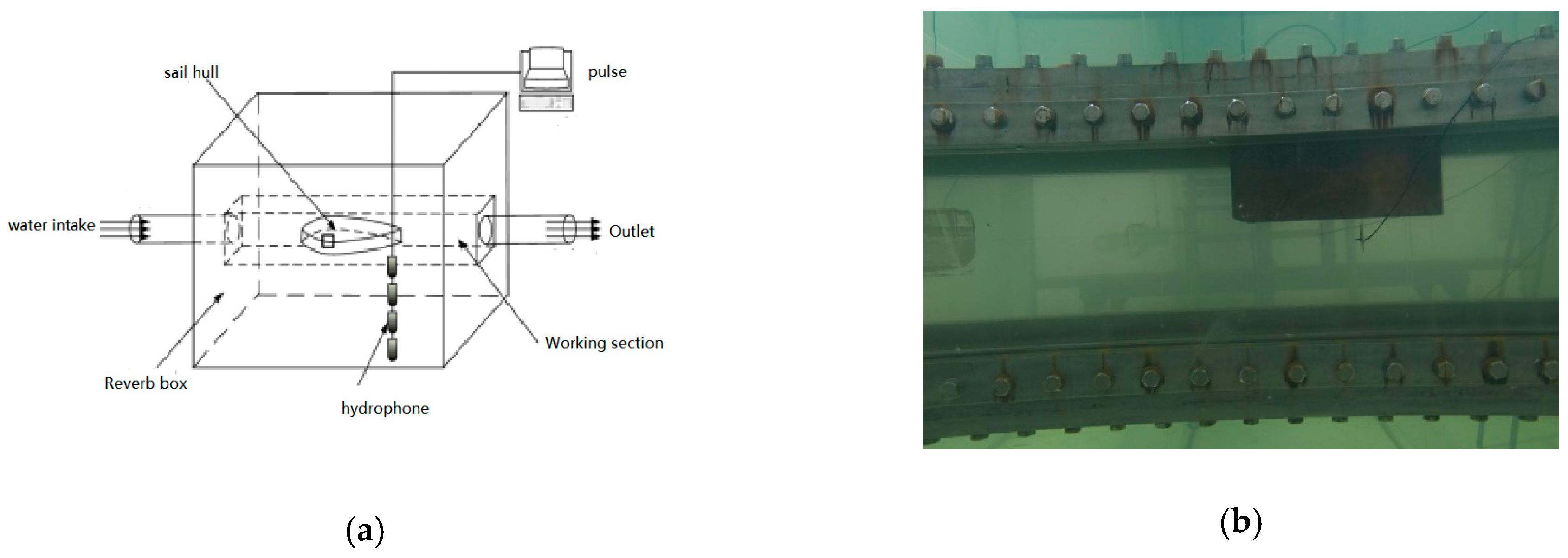

| No. | Grid Numbers | Resistance Values |
|---|---|---|
| 1 | 1 million | 33.9004 |
| 2 | 1.5 million | 34.1862 |
| 3 | 2 million | 34.9821 |
| 4 | 2.5 million | 35.6891 |
| 5 | 3 million | 35.6893 |
| 6 | 3.5 million | 35.6979 |
| 7 | 4 million | 35.6986 |
| y+ | Numerical Simulation Value | Experimental Test Value |
|---|---|---|
| <50 | 102.0 | 102.3 |
| <100 | 109.3 | 102.3 |
| <250 | 120.2 | 102.3 |
| <300 | 98.1 | 102.3 |
© 2018 by the authors. Licensee MDPI, Basel, Switzerland. This article is an open access article distributed under the terms and conditions of the Creative Commons Attribution (CC BY) license (http://creativecommons.org/licenses/by/4.0/).
Share and Cite
Liu, Y.; Li, Y.; Shang, D. The Generation Mechanism of the Flow-Induced Noise from a Sail Hull on the Scaled Submarine Model. Appl. Sci. 2019, 9, 106. https://doi.org/10.3390/app9010106
Liu Y, Li Y, Shang D. The Generation Mechanism of the Flow-Induced Noise from a Sail Hull on the Scaled Submarine Model. Applied Sciences. 2019; 9(1):106. https://doi.org/10.3390/app9010106
Chicago/Turabian StyleLiu, Yongwei, Yalin Li, and Dejiang Shang. 2019. "The Generation Mechanism of the Flow-Induced Noise from a Sail Hull on the Scaled Submarine Model" Applied Sciences 9, no. 1: 106. https://doi.org/10.3390/app9010106




